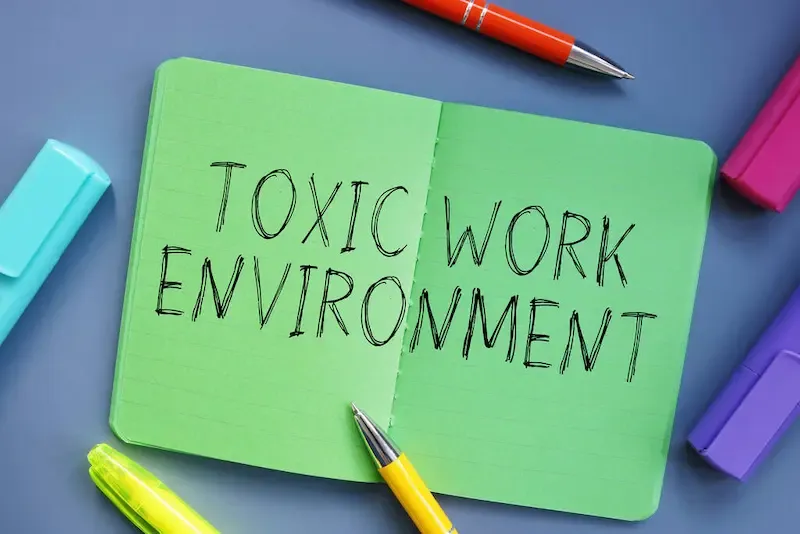In today’s fast-paced workplace, subtle forms of bullying are often masked as harmless banter or unintentional behavior. However, these micro-aggressions can undermine an employee’s confidence, leading to a toxic atmosphere that jeopardizes mental health and productivity. Experts note that recognizing the signs of subtle bullying is crucial, as failure to identify this insidious behavior can leave individuals feeling isolated and powerless. “Many employees do not realize they are victims of subtle bullying until it profoundly affects their well-being,” explains Dr. Sarah Thompson, a workplace psychologist.
Subtle bullying may include tactics like passive-aggressive remarks or exclusion from important discussions — all conducted under the radar of overt aggression. It thrives in environments where open communication is stifled and leaves no visible scars but creates deep emotional wounds. Understanding these dynamics can empower workers to address their discomfort and advocate for change within their organizations. This article will help readers uncover the hidden intricacies of workplace interactions, providing vital insights into identifying subtle bullying and fostering a healthier work environment.
Defining Subtle Workplace Bullying
Subtle workplace bullying may seem innocuous at first, but it can have serious repercussions for the targeted employee. This type of bullying often includes behaviors that are indirect and insidious. Examples include persistent criticism disguised as “constructive feedback,” constant interruptions during meetings, or dismissive remarks made in front of peers. Unlike overt bullying, which is characterized by open aggression (such as shouting or physical intimidation), subtle bullying operates under the radar. It might not always be visible to others, making it difficult for victims to pinpoint the source of their distress.
The crucial difference between overt and covert bullying lies in their visibility and impact. Overt bullying is evident; everyone sees the aggressive behavior and acknowledges its toxicity. In contrast, subtle bullying can be overlooked or dismissed as mere personality conflicts or misunderstandings. An employee might find themselves subjected to a barrage of micro-aggressions — small comments that chip away at their confidence over time — without any clear action from supervisors or HR professionals to address them. As psychologist Dr. Maureen Duffy points out, “Covert behaviors can create a climate where workers feel they can’t trust their colleagues.”

For instance, if a manager consistently allocates important projects to certain team members while intentionally sidelining others without explanation, this could indicate subtle separation tactics at play. The excluded employees may begin questioning their abilities and worth within the organization, experiencing increased levels of anxiety and self-doubt. Recognizing these patterns becomes imperative for both employees trying to navigate difficult work environments and managers who aim to foster inclusive spaces.
Ultimately, understanding what constitutes subtle workplace bullying forms the foundation for identifying it properly in professional settings. Employees must become equipped with greater awareness so they can recognize when they are being undermined silently but consistently — allowing them an opportunity to advocate for themselves before stressors escalate into more prominent psychological issues.
Common Signs of Subtle Bullying by a Boss
Subtle bullying at work often begins with passive-aggressive communication styles, which can create an environment laden with tension. For instance, a boss might respond to a team member’s suggestion in a seemingly polite yet undermining manner, such as saying, “That’s an interesting idea; I suppose we could think about it if there’s time.” This kind of response may appear innocuous, but the underlying tone conveys skepticism and doubt that can chip away at an employee’s confidence. Dr. Daniel Halpern, a workplace psychologist, notes that passive-aggressiveness makes it difficult for targets to address issues directly because they are left questioning intent.
Also, subtle bullying manifests when supervisors undermine their employees’ authority or decisions without confronting them directly. Imagine a manager who openly questions the judgment of a subordinate’s project during meetings but fails to offer constructive criticism afterward. By undermining the employee in public settings while avoiding private discussions about improvements, the boss fosters self-doubt and anxiety. Such behavior not only diminishes staff morale but also discourages innovation by making employees fearful of voicing ideas or taking initiative.

Exclusion is another key indicator of subtle workplace bullying perpetrated by leadership. When important meetings are held without certain team members or when critical information is deliberately withheld, it signals exclusion rather than choice. For example, if a boss consistently schedules strategic planning sessions and does not invite one specific employee — especially one whose contributions could benefit discussions — this sends a clear message: their input is unvalued. Consequently, this lack of inclusion can lead individuals to feel unnecessary stress over their standing within the organization and erode overall team cohesion.
Recognizing these signs is essential for understanding whether subtle bullying is affecting workplace dynamics. Notably, victims may experience lingering emotional repercussions from such interactions long after they occur; thus creating awareness around these behaviors can help foster more respectful professional environments where everyone feels valued and supported.
Emotional and Psychological Impact on Employees
Subtle workplace bullying can have profound effects on an employee’s mental health and self-esteem. Those who experience such behaviors often find themselves questioning their worth, leading to a spiraling sense of insecurity. As Samantha Lee, a workplace psychologist, notes, “The seemingly minor jabs and micro-aggressions can accumulate over time, creating an overwhelming sense of inadequacy.” Individuals may begin to doubt their skills and contributions, which is particularly damaging in competitive environments where performance is paramount.

This erosion of confidence can manifest as heightened anxiety and stress. Employees may start to feel dread about heading into the office each day. For instance, one employee recounted how her boss frequently overlooked her during team meetings. This behavior led her to feel isolated from her colleagues, causing intense feelings of anxiety whenever she needed to speak up or share ideas. The fear of being dismissed or belittled became so consuming that it eventually affected her physical health—resulting in insomnia and migraines.
Also, the emotional strain doesn’t only affect the bullied employees; it can ripple throughout entire teams or departments. Research indicates that when team members witness bullying behavior but do not intervene, they too may experience increased stress levels due to a toxic work environment. Feeling helpless in these situations can create an atmosphere where collaboration suffers, ultimately harming productivity for everyone involved.
Recognizing the impact of subtle bullying is crucial for both individuals experiencing it and organizations aiming for a healthy culture. Employers should promote resources for mental wellness while encouraging conversations about emotional well-being within professional settings. Mental health is not just an individual concern; addressing it proactively benefits the entire workplace ecosystem by fostering resilience and cohesion among team members.
Recognizing the Patterns: Is It You, or Is It Them?
Understanding whether workplace interactions stem from personal faults or external bullying can be challenging. Self-reflection is a crucial first step in assessing one’s situation. Employees may consider questions like, “Do I often feel uneasy before team meetings?” or “Am I consistently singled out by my supervisor for criticism while others receive support?” Taking an inventory of feelings and experiences over time can help clarify whether patterns of behavior are indicative of subtle bullying. Noticing these triggers — such as receiving backhanded compliments or being ignored during discussions — can illuminate potential issues.

Additionally, gathering observations from colleagues can bring much-needed perspective to the situation. Employees might choose to discreetly ask trusted coworkers if they have noticed similar behaviors toward themselves or others within the team. For instance, a worker who frequently avoids eye contact in conversations could reveal that such avoidance was not just directed at one individual but appears to affect several team members. This collective insight helps discern whether questionable behaviors arise from a broader issue within the workplace culture rather than personal misinterpretations.
It is also beneficial to document specific incidents and their context when approaching self-reflection and colleague consultations. By identifying repeated behaviors, employees gain clarity about what constitutes inappropriate conduct versus typical workplace dynamics. Keeping a record allows employees to present concrete examples if they decide to escalate their concerns to HR or management down the line.
Ultimately, recognizing these patterns empowers individuals to determine not only if subtle bullying exists but also how best to address it through appropriate channels — be it by seeking mutual support within their team or initiating formal conversations with human resources.
Strategies for Dealing with Subtle Bullying
Confronting subtle bullying in the workplace can be challenging, especially when the aggressions are not overtly recognizable. A key strategy for dealing with these situations is to document incidents meticulously. Keep a detailed record of specific occurrences, noting dates, times, and context. For example, if a colleague frequently interrupts during meetings or dismisses your ideas without clear reasoning, write down those moments. This documentation serves as both clarity for your own thoughts and evidence should you need to address the behavior formally.

After gathering sufficient evidence, employees should consider approaching Human Resources (HR) or higher management with their concerns. It’s essential to present this information calmly and professionally. For instance, in a meeting with HR, an employee could state: “I have experienced several instances where my input is overlooked in team discussions, which negatively affects my morale and productivity.” By using concrete examples from your documentation, you provide HR representatives with a clearer understanding of the issue at hand.
A well-rounded approach also includes engaging support systems within the organization. Discussing experiences informally with trusted colleagues may not only validate one’s feelings but also reveal whether others share similar concerns or experiences. This collective perspective can amplify the message when brought to management’s attention, making it harder to dismiss as isolated incidents.
Ultimately, addressing subtle bullying involves courage and methodical action. Documenting instances allows individuals to recognize patterns of behavior while effectively communicating issues to management helps in fostering a healthier workplace environment where professional respect reigns supreme.
Fostering a Supportive Work Environment
Creating a supportive work environment is vital in combating subtle bullying and promoting overall workplace well-being. Open communication among team members plays a crucial role in this effort. When employees feel comfortable expressing their concerns or providing feedback, it cultivates trust and minimizes misunderstandings that can lead to micro-aggressions. For instance, regular check-ins or feedback sessions can serve as platforms where employees discuss feelings of exclusion or discomfort without fear of retribution. “Encouraging dialogue fosters an atmosphere where everyone feels valued,” noted workplace psychologist Dr. Emily Tran, emphasizing the significance of transparent communication pathways.

In addition to fostering open lines of communication, implementing clear anti-bullying policies is essential for setting expectations around acceptable behavior in the workplace. A strong policy should define what constitutes bullying — both overt and subtle — and outline the procedures for reporting incidents. For example, when XYZ Corp instituted an anti-bullying policy that prioritized employee well-being, they noticed increased morale and engagement across teams. Employees were more likely to report uncomfortable interactions knowing there was a transparent process for addressing them. “Having clearly defined policies empowers individuals to stand up against inappropriate behavior,” said HR expert James Caldwell.
Additionally, ongoing training sessions focusing on empathy and inclusivity can reinforce these policies while equipping staff with tools to identify subtle bullying behaviors early on. Workshops that help build emotional intelligence among team members often contribute to a healthier workplace culture by discouraging behaviors often linked with bullying tendencies. By normalizing discussions about mental health and interpersonal relationships at work, organizations can dismantle stigma surrounding these issues and promote proactive responses instead of reactive ones.
Ultimately, creating a supportive work environment requires commitment from all levels of management and staff alike. It involves not just establishing protocols but also fostering a culture where everyone’s voice matters — from entry-level employees to upper management — as they navigate their roles together effectively and respectfully. Encouraging support over silence creates allies out of coworkers rather than bystanders, significantly reducing instances of subtle bullying within organizations.
Seeking Professional Help if Needed
When workplace bullying creeps into daily routines, it can deeply affect mental well-being. For individuals feeling overwhelmed by the effects of subtle bullying, seeking the assistance of a therapist or counselor may be beneficial. Mental health professionals can provide a safe space to explore feelings and experiences, allowing victims to process emotional distress in a confidential setting. Recognizing signs of anxiety or depression stemming from workplace dynamics is essential; when these symptoms interfere with one’s quality of life, reaching out for help is a step toward recovery.

Consider Sarah, an office manager who found herself becoming increasingly anxious before meetings with her manager. What initially felt like harmless feedback soon turned into patterns of constant criticism, masked as ‘constructive.’ After discussing her experience with a therapist, Sarah learned healthy coping strategies and ways to assertively communicate her needs in the workplace. Therapy provided her not only with clarity but also practices to rebuild her self-esteem. Stories like Sarah’s highlight how professional guidance can empower individuals facing subtle bullying.
For those unsure about where to find support, various resources exist dedicated to helping victims of workplace bullying. The StopBullying.gov website offers extensive information including definitions, warning signs, and steps to take if one feels bullied at work. Many cities or regions provide helplines for counseling services dedicated to mental health crises. Additionally, employee assistance programs (EAPs) often available through employers offer confidential support and are designed to assist employees in challenging times—making them a vital resource for those grappling with bullying situations.
Ultimately, addressing issues related to subtle bullying requires not just awareness but action on personal and organizational levels. Seeking professional help marks an important step in reclaiming personal power and prioritizing mental health amidst workplace challenges. Those who face such hurdles should never hesitate to reach out—support is available and taking that initial step can lead towards rebuilding confidence and well-being.
Proactive Measures Against Subtle Workplace Bullying
In summary, recognizing the signs of subtle bullying at work is crucial for fostering a healthy workplace environment. Employees should be vigilant about passive-aggressive behavior, exclusion from important discussions, and undermining actions that may go unnoticed but impact mental health and self-esteem. Developing strategies to cope, such as documenting incidents and discussing concerns with HR, can empower individuals facing these challenges.
Addressing subtle bullying proactively is essential not just for personal well-being but for the overall health of the workplace culture. Teams that promote open communication and implement clear anti-bullying policies create an atmosphere where employees feel safe and valued. By taking action against subtle bullying, organizations can enhance productivity and job satisfaction among all team members.





